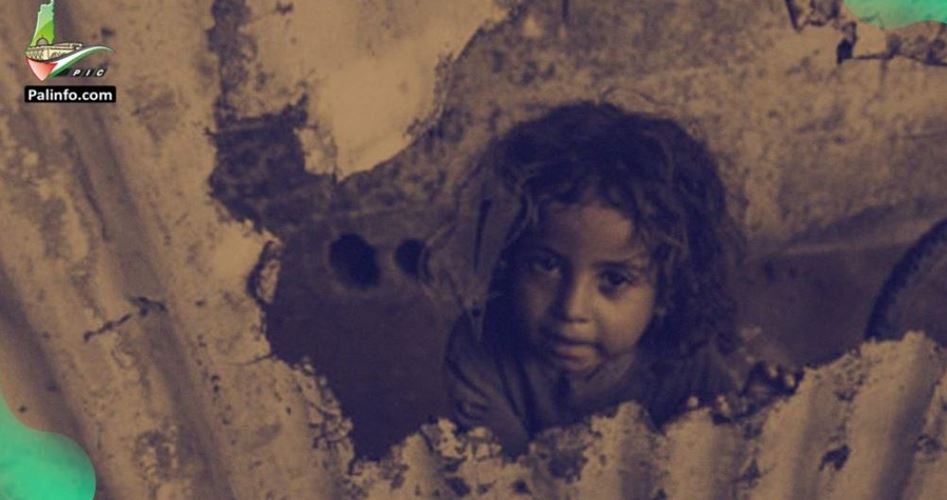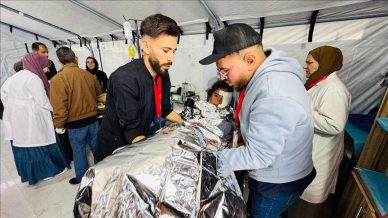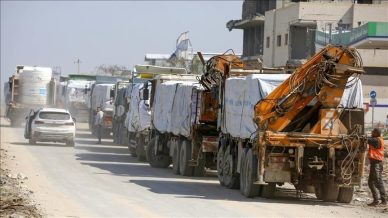The UN Office for the Coordination of Humanitarian Affairs (OCHA) stressed in a report issued Thursday that the blockade on Gaza should be fully lifted in line with UN Security Council Resolution 1860.
The report considered the situation in the Gaza Strip as “catastrophic” after 15 years of Israeli siege saying that “long-standing access restrictions imposed by the Israeli authorities have undermined Gaza’s economy resulting in high unemployment food insecurity and aid dependency.”
The blockade has raised concern about collective punishment and other possible violations under international humanitarian and human rights law. The blockade on Gaza should be fully lifted in line with Security Council Resolution 1860 the report reads.
This land sea and air blockade according to the report has significantly exacerbated previous restrictions limiting the number and specified categories of people and goods allowed in and out through the Israeli-controlled crossings.
Prior to the Second Intifada in 2000 up to half a million exits of people from Gaza into Israel primarily workers were recorded in a single month. For the first seven years of the blockade this number declined to just over 4000 on average rising to 10400 monthly over the next eight years.
So far in 2022 the Israeli authorities have approved only 64% of patients’ requests to exit Gaza mainly for specialized treatment in the West Bank including East Jerusalem by the time of the scheduled medical appointment. In previous years patients have died while awaiting a response to their application.
The Egyptian authorities closed the Rafah border crossing with Gaza for long periods after 2014 following political unrest in Egypt. Rafah has been mostly operational since mid-2018 and was open for 95 days out of 151 in the first five months of 2022.
After the blockade the number of truckloads of commercial goods exiting Gaza dropped significantly to only two truckloads on average per month in 2009. Following the 2014 escalation of hostilities commercial transfers from Gaza to the West Bank resumed and from March 2015 exports to Israel also resumed. In August 2021 exports to Egypt started for the first time boosting the monthly average of exports to 787 in the first five months of 2022. Pre-blockade the average monthly high was 961.
The volume of truckloads entering Gaza in the first five months of 2022 around 8000 per month was about 30% below the monthly average for the first half of 2007 before the blockade. Since then the population has grown by more than 50%.
Israeli forces have largely restricted access to areas within 300 meters of the Gaza side of the perimeter fence with Israel; areas several hundred meters beyond are deemed not safe preventing or discouraging agricultural activities.
Israeli forces restrict access off the Gaza coast currently only allowing fishermen to access 50% of the fishing waters allocated for this purpose under the Oslo Accords.
Unemployment levels in Gaza are amongst the highest in the world: the Q1 jobless rate in 2022 was 46.6% compared with an average of 34.8% in 2006. Youth unemployment for the same period (age 15-29) stands at 62.5%. (PCBS)
31% of households in Gaza have difficulties meeting essential education needs such as tuition fees and books due to lack of financial resources. 1.3 million out of 2.1 million Palestinians in Gaza (62%) require food assistance.
At its current operating capacity the Gaza Power Plant can only produce up to 80 megawatts (MW) supplemented by 120 MW purchased from Israel meeting about 50% of the electricity demand in Gaza (400-450MW). In 2021 rolling power cuts averaged 11 hours per day.
About 2.1 million Palestinians in Gaza are ‘locked in’ the vast majority unable to access the remainder of the oPt and the outside world limiting access to medical treatment unavailable in Gaza to higher education to family and social life and to employment and economic opportunities.
Since 2007 movement restrictions imposed by the Israeli authorities since have had a profound impact on living conditions in Gaza and have fragmented the territorial unity and the economic and social fabric of the oPt.
Those eligible for exit permits constitute a small minority primarily day laborers businesspeople medical patients and staff of international organizations.














